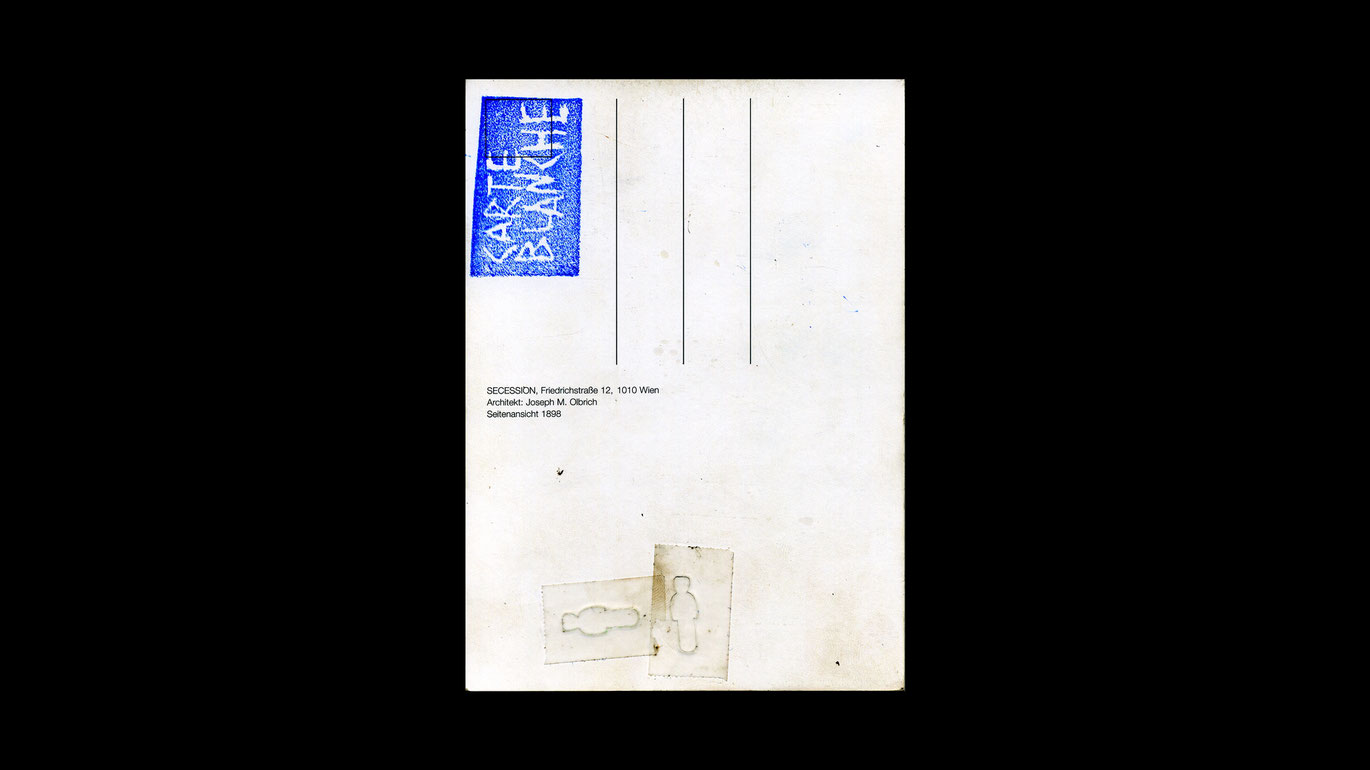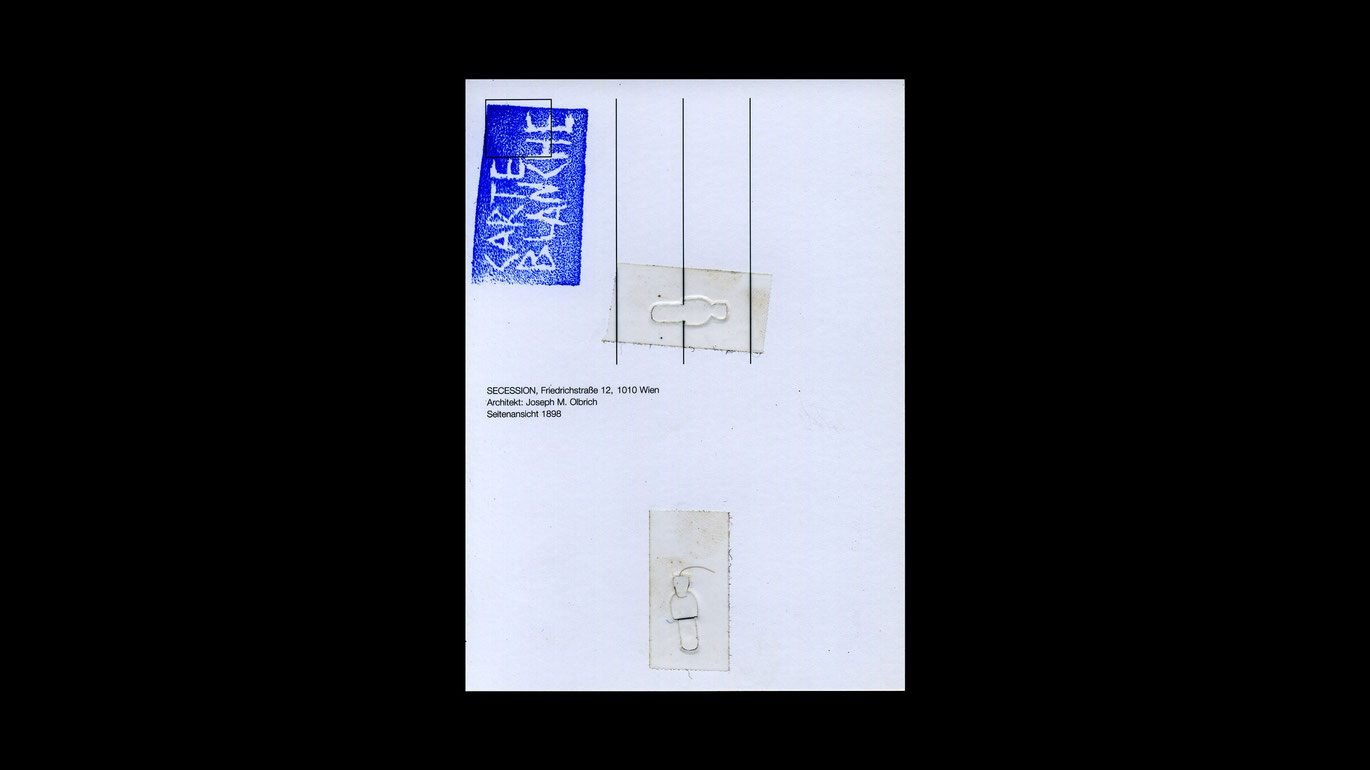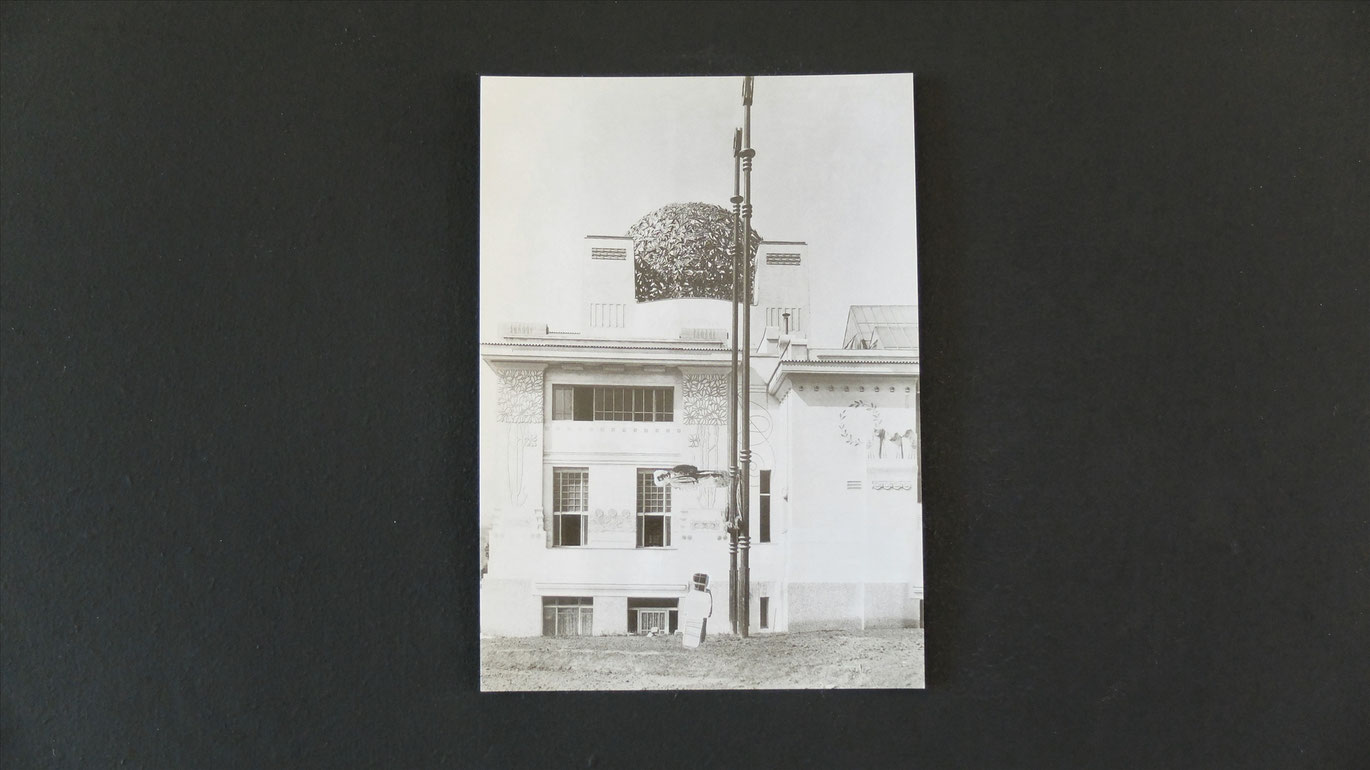Exhilaration
The series Carte blanche is a cycle of works in which the depicted yet secluded "ideal world" of a postcard is changed within the image in an analogue way. A new reality evolves without adding or cutting any material. This new reality dissolves the existing one and the rigidity of the unalterable. In the case of Exhilaration this technique becomes film. (Christian Ruschitzka)
Who still writes postcards nowadays? Those who work with stop-motion tools from the early days of animation film, so that the illusion of movement is also truly visible, possibly still do - or do so again. What we first see in this short film is the backside of a postcard superimposed with a time lag from the sound. A woman´s voice quickly reads out the poem Der Empfang by Konrad Bayer, which runs through a chain of names whose bearers shake hands, in a relay of sorts. Rather than a stamp, in the top left corner are the words "Carte Blanche." Below, one sees two roughly outlined figures, which are attached to the card with tape. In addition, the card has the address of the Vienna Secession.
A postcard appears to us almost as a surface; the Secession houses the supposed first white cube of art. All possible things can be scribbled on a postcard. Since the lines for the recipient´s address remain empty, the surface can be understood metaphorically as a carte blanche.
In the first part of the film, which is comprised of 160 separate cards, filmmaker Christian Ruschitzka has one of the two little figures standing next to one another, climb up the card and then down again. The crossing of the empty address lines in the top part of the postcard synchronously casts a line on the outline of the figure that remains on the ground. After a fade to black we see the (same) movement against the backdrop of the "cabbage head" atop the Secession. It is now all a game with the space, not with the surface. This time, the figure, a cutout stencil of the architect Josef Olbrich in a suit and top hat, climbs up along two pylons. Its counterpart is a mere outline and seems to spin on the ground. But this impression, too, is simply the result of cinematic motion effects, it is the illusion of an illusion—namely, an imaginary shadow, which the figure, upon return from its high-altitude euphoria, casts on the contour remaining on the ground. In the end, the two figures are one and the same. The end credits of the film are inscribed on the now diagonal postcard: DIY-magic. (Thomas Edlinger)
Translation: Lisa Rosenblatt
Höhenrausch
2015
Austria
2 min 30 sec



